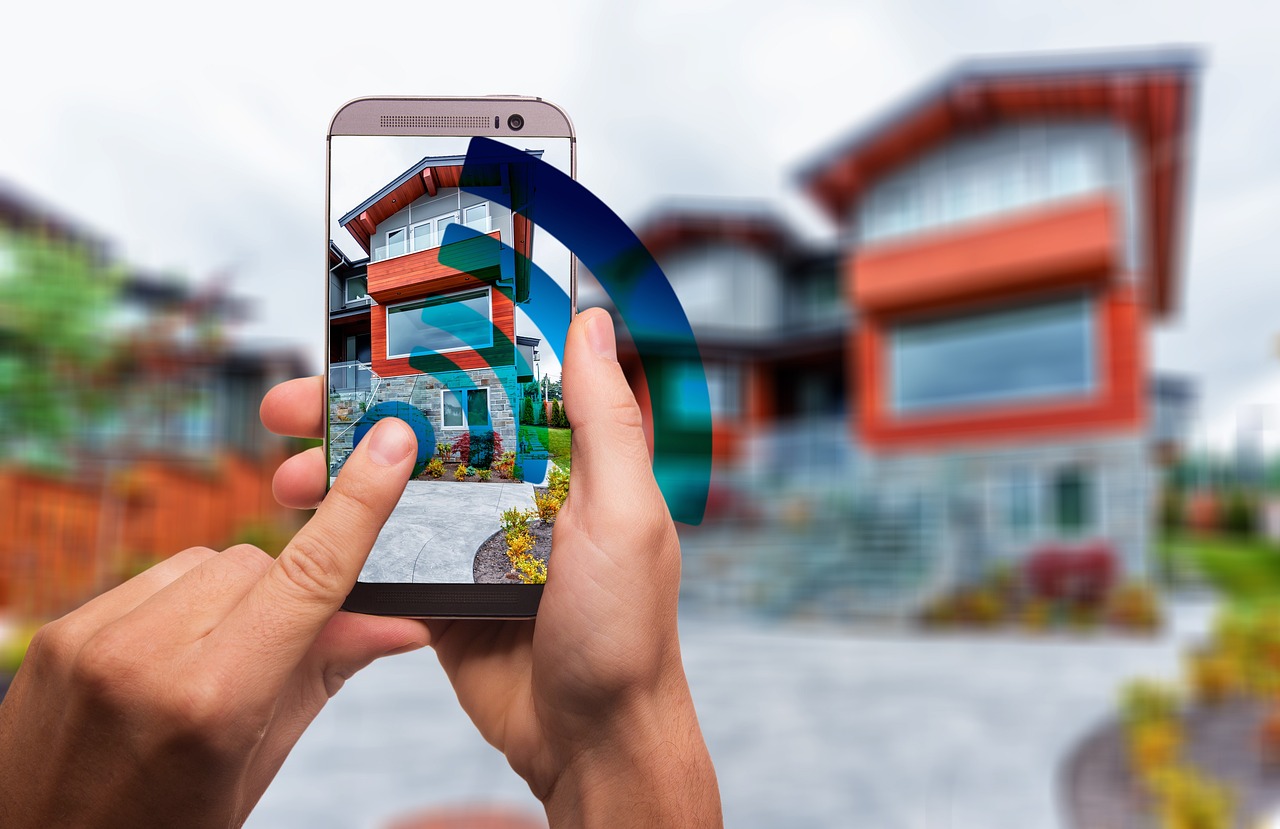Table of Contents
- Introduction to Self-Monitoring Home Security Systems
- Types of Self-Monitoring Home Security Systems
- Benefits of Using a Self-Monitoring Home Security System
- Choosing the Best Self-Monitoring Home Security System for You
- Best Self-Monitoring Home Security Systems
- Conclusion
- Frequently Asked Questions
Introduction to Self-Monitoring Home Security Systems
If you are like most people, you probably think of home security as an electronic system that is activated when you are away from home. However, there is a growing trend towards self-monitoring systems that allow you to keep an eye on your home security even when you are there.
A self-monitoring home security system is a system that uses sensors to detect intruders and notify the homeowner of an intrusion. The sensors are typically placed around doors and windows, and they may also be placed in other areas of the home, such as the attic or basement.
When an intrusion is detected, the system will send a signal to the homeowner’s phone or another device, allowing them to take action. Self-monitoring systems are becoming increasingly popular, as they offer a more affordable alternative to traditional security systems.
Additionally, self-monitoring systems do not require a monthly service fee, and they can be installed without the need for professional assistance.
In this article, we will discuss the types of self-monitoring home security systems and the benefits of having one. We will also provide tips for choosing the best self-monitoring home security systems and an overview of some of the top self-monitoring systems currently on the market.
Types of Self-Monitoring Home Security Systems
When it comes to self-monitoring home security systems, there are several different types available on the market.
One popular option is a wireless system, which uses a series of sensors and a control panel to detect and alert you of potential security breaches in your home. These systems can be easily installed and often come with a variety of features, such as remote access and integration with other smart home devices.
Another option is a wired system, which uses a network of hardwired sensors and a control panel to detect and alert you of potential security breaches. These types of systems can be more difficult to install but offer greater reliability and more sophisticated control over the setup.
Another type of self-monitoring home security system is the DIY or plug-and-play type, which does not require professional installation. Instead, these systems come with easy-to-follow instructions and can be set up by the homeowner.
These systems usually come with a variety of sensors such as motion, door, and window sensors, and a control panel that can be used to monitor and control the system remotely. They can be expanded with additional sensors and devices as needed.
Another option that has become increasingly popular in recent years is the self-monitored Smart home security system. These systems use a combination of smart home devices like cameras, doorbells, and smart locks, along with an app that allows you to monitor and control the system remotely.
These systems are easy to set up and are often more affordable than traditional security systems. They can also be integrated with other smart home devices, such as thermostats and lighting, to create a comprehensive smart home ecosystem.
Lastly, there are also self-monitored professional monitoring services, which are similar to traditional professionally monitored systems, but in this case, the homeowner is responsible for monitoring and responding to alerts.
These systems typically include professional-grade equipment such as high-resolution cameras, advanced motion detection, and an option to add professional monitoring service as an add-on.
In summary, there are many types of self-monitoring home security systems available, each with its own unique features and benefits. It’s important to consider your specific needs and preferences when choosing the right system for you.
Benefits of Using a Self-Monitoring Home Security System
One of the main benefits of using a self-monitoring home security system is the cost savings compared to traditional professionally monitored systems. With a self-monitoring system, you are in charge of monitoring your own home, which eliminates the need to pay for a monthly monitoring service.

Additionally, self-monitoring systems offer more flexibility as you can access and monitor your home security system remotely, via a smartphone app or web interface. This allows you to check in on your home and receive alerts wherever you are, at any time.
Furthermore, self-monitoring systems often include advanced features such as motion detection, night vision, and remote access control, that can give you peace of mind knowing that your home is well protected. With self-monitoring home security systems, you have the ability to take control of your own home security and customize it to your specific needs and preferences.
Choosing the Best Self-Monitoring Home Security System for You
Self-monitoring home security systems allow you to keep an eye on your property even when you’re not at home, and they can provide peace of mind in case of an emergency. However, there are a few things to keep in mind when choosing a self-monitoring home security system.
If you live in a house or an apartment, you’ll need to choose a system designed for your specific type of home.
Also, home security systems can vary widely in price, so it’s important to find one that fits within your budget.
Consider your home security needs as well by asking yourself the following questions: What do you need your home security system to do? Do you want it to just monitor your property, or do you need it to provide features like home automation or two-way audio? Once you know what you need, you can narrow down your options.
Taking these factors into account will help you choose the best self-monitoring home security system for your specific needs.
Best Self-Monitoring Home Security Systems
There are a few different brands of self-monitoring home security systems wherein homeowners can monitor their home security system themselves. These systems require minimal effort on the part of the homeowner to set up, maintain and operate. Some of the better-known systems include:
Ring Alarm: This is a comprehensive self-monitoring system that includes door and window sensors, motion detectors, and a professional-grade base station. It also has Alexa built-in, allowing homeowners to control the system with their voice.
Wyze: Wyze offers a low-cost home security option with various sensors and cameras. It also has motion tracking, two-way audio, and live-streaming features.
Abode: Abode is a comprehensive self-monitoring system that includes door and window sensors, motion detectors, cameras, smart home integration, and more. It also offers one of the best mobile apps for controlling your security system from anywhere.
Scout Alarm: Scout Alarm provides an affordable do-it-yourself (DIY) security solution with no long-term contracts required. It includes door and window sensors, motion detectors, and a mobile app for easy access.
Kangaroo: Kangaroo is a low-cost home security system that includes door and window sensors, motion detectors, and a range of smart home integrations.
No matter which self-monitoring home security system you choose, it’s important to consider the features you need and what fits best within your budget. When done right, self-monitoring home security systems can provide peace of mind and make it easier to keep an eye on your home from anywhere.
Conclusion
Self-monitoring home security systems are an effective and cost-efficient way to protect your property. The different types of self-monitoring systems available on the market offer a range of features and capabilities to suit various needs and preferences.
The flexibility and control that self-monitoring systems provide, such as remote access via a smartphone app or web interface, can give you peace of mind knowing that your home is well protected. When choosing the best self-monitoring system for you, it’s important to consider factors such as the type of property, budget, and home security needs.
With the right self-monitoring system in place, you can rest easy knowing your home is secure.
Frequently Asked Questions
The benefits of self-monitoring home security systems include cost savings compared to traditional professionally monitored systems and flexibility in remote access and monitoring via a smartphone app or web interface.
Self-monitoring home security systems allow the user to monitor and control their own home security system, as opposed to having a professional monitoring service do it.
There are different types of self-monitoring home security systems, such as Ring Alarm, Wyze, Abode, Scout Alarm, and Kangaroo. Each of these offers different features and levels of protection. Be sure to consider all of the factors before choosing a system for your home.
Self-monitoring home security systems cost different amounts of money starting from $99, while some of the more advanced systems can cost more than $279. It is important to look at different systems and compare prices before making a purchase.
When you are looking for a self-monitoring home security system, it is important to think about factors such as the type of property, budget, and home security needs.
When looking for a self-monitoring home security system, it is important to consider the features that are most important to you. Some of the features you may want to look for include motion detectors, cameras, and sensors.
It depends on the specific system and the level of technical skill of the person installing it, but many self-monitoring home security systems are designed to be easy to install and come with step-by-step instructions.







